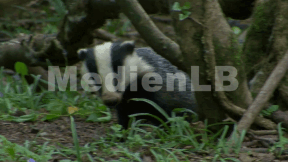 Mathematics, Primary School
Mathematics, Primary School

55506727
Lerneinheit Mathematik 4
Mathematik im Alltag
Auf den Hund gekommen – Mathematik praktisch und im Alltag angewandt. In zehn unterschiedlich digital gestalteten Aufgaben üben die Schülerinnen und Schüler unterschiedliche Rechenoperationen und erfahren gleichzeitig eine Menge über Hunderassen und Hundehaltung. Spielerisch gestaltet werden Unterhaltskosten und der Zeitaufwand zur Hundehaltung vermittelt, festgestellt, welche Hundeart am lautesten bellt und wie man die Größe einer Hundehütte berechnet. Ebenso wie die Rechenfähigkeiten wird das logische Denken gefördert.
Demo
Included Tasks
- Wuff und weg – Mathematik auf den Hund gekommen!
- Budget für Bello – Was kostet ein Welpe?
- Top-Hunde: Die beliebtesten Rassen und ihre Zahlen
- Hundepfoten und Meter – Längen im Hundealltag
- Größenvergleich - Vom Zwergspitz bis zum irischer Wolfshund!
- Lautstark und lieb - Mathematik der Hundegeräusche
- Bauherren für Bello – Mathematik der Hundehütten
- Zeit für Fido – Wie viel Zeit braucht ein Hund?
- Rasend schnell – Mathematik der Hunderennen
- Zugabe: Die Top 4 der Hunderekorde auf der ganzen Welt
Curriculum-centred and oriented towards educational standards
Matching
Der Haushund
In 10 interaktiven Aufgaben und Videos wird Wissen zum Thema Haushund vermittelt und anschließend abgefragt.
Dachs
Der Dachs ist ein nachtaktiver Bewohner der heimischen Wälder. In teilweise jahrzehntealten, bis zu 5m tiefen Bauen verbringt er den Tag und begibt sich nachts auf Nahrungssuche.








